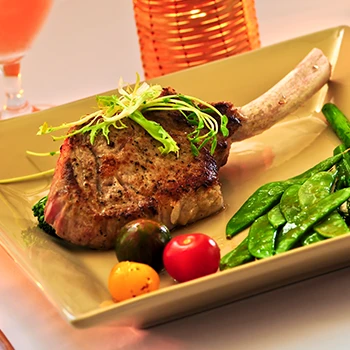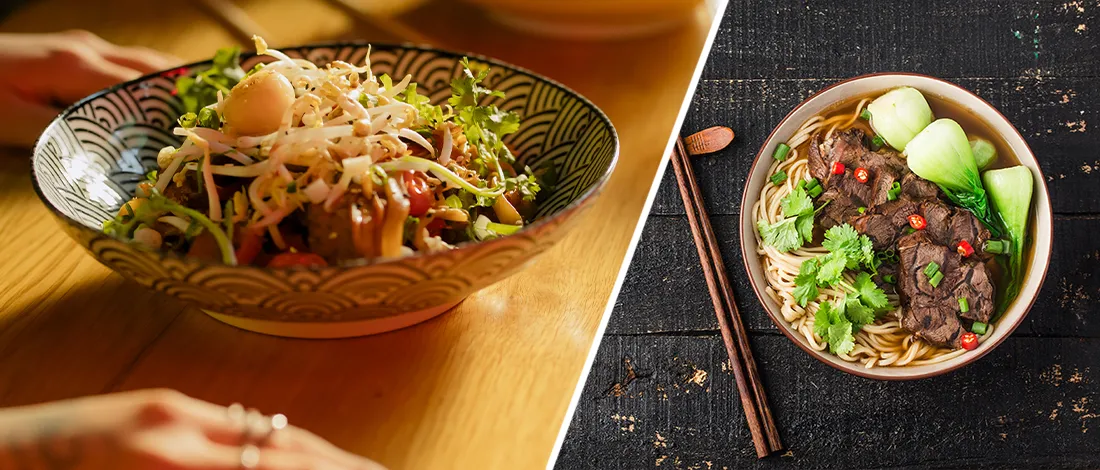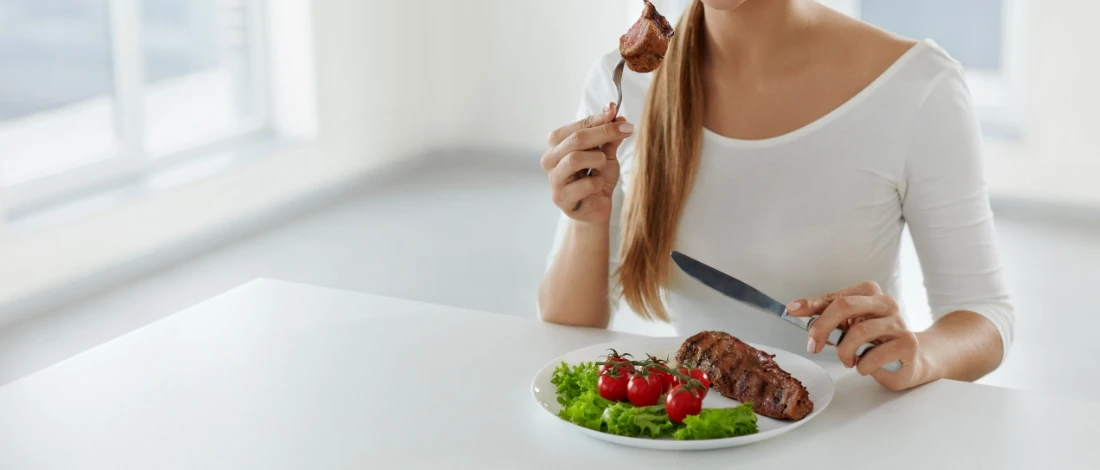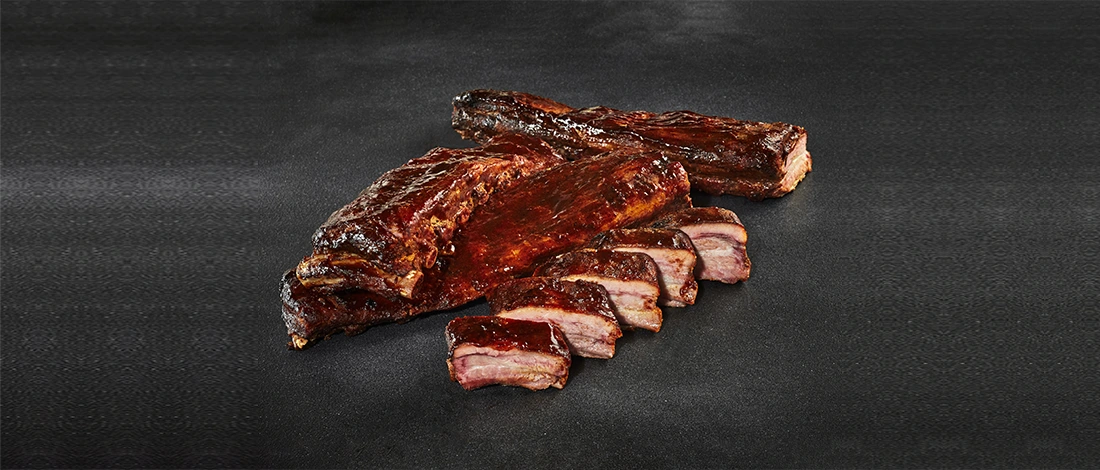As a meat enthusiast, I love trying out different types of meats, and veal happens to be one of my favorites because it's lean, tender, and highly versatile for different recipes.
Today I'll share everything you need to know about veal meat, including my tips for cooking restaurant-style veal meat right at home.
Let's jump straight into it.
Quick Summary
- Veal is meat from young cow calves, typically less than 12 months old.
- Veal has a mild beef flavor compared to lamb meat.
- Fresh veal meat is creamy pink in color and has no foul smell.
What Is Veal Meat?

Veal meat is meat from a younger animal, either a dairy or beef breed. It's meat from calves that are usually between six and eight months old but can be much younger altogether, depending on the farming procedures.
Veal calves are generally male cows that are unable to give milk and are thus sold by dairy farms to be butchered for profit.
These male calves are placed in veal cages, which are tiny plastic huts with a walled area large enough for a calf to stand.
These cramped conditions prevent calves from indulging in regular activities that would generally build and harden their muscles, such as walking, jogging, or playing.
The only goal for the calves is to become delicate meat, and veal calves require soft, undeveloped muscles to match consumer expectations of how veal meat should taste.
Because of its early age and how it's reared, veal meat is finer and more tender. Despite the lack of delicacy in its production, I think it has a more delicate flavor than other meat cuts from matured animals.
Also Read: Veal vs Beef
Types of Veal Meat Cuts
Let's look at some of the different veal meats you can find in your local butcher shop.
- Veal rump: This is a cut from the rear of the calf, near the loin and hip bone. The rump comprises five different rump muscles, each with its unique amount of nerves and texture. Rump chops are sliced from the whole rump.
- Veal cutlets: These are thin, boneless slices of flesh obtained from the calve's leg. I recommend you stay away from cutlets from the shoulder as these tend to contain too many connective tissues and collagen.
- Veal shank: This is derived from the rear shank, which is the leg bone below the shoulder and above the knee. The veal shank is often cross-cut to display a cross piece of the shin bone. One of my favorite Italian braised dishes that uses veal shank as a key ingredient is the Osso Bucco.
- Ground veal: This is created from veal trimmings. Because it is relatively lean, it is typically combined with minced meats such as beef, chicken, or pork.
- Slink veal: This is the youngest veal available, obtained from stillborn or unborn calves. It is often sourced when pregnant cows are butchered.
“Veal meat is a rich source of protein and minerals, despite having a lower concentration than beef sourced from older, mature cattle.”
- Shahzadi Devje, Registered Dietician
3 Ways to Cook Veal Meat

Before cooking your veal, inspect the thickness and fat layer on it.
If you have an extra thick veal, thin out the cutlets as needed. If you want to produce schnitzel, a very thin variant of veal scallops, carefully beat/pound the veal until it flattens to your likeness.
I recommend doing this on a hardwood work surface for the best results.
Remove any surplus fat on the meat. The extra fat around the margins of your veal may cause it to curl during frying. So make sure to trim those.
After preparing your veal, you can cook it in three ways: braising, breading, or grilling.
Here are individual steps to cooking veal in three different methods.
1. Breading Veal
- Begin the breading procedure by covering the veal in all-purpose flour.
- Then, dip them in a dish with a scrambled raw egg until completely coated.
- Cover the cutlets with breadcrumbs, which readily adhere to the flour and egg coating.
- Heat butter in a pan and sear the cutlets for 3-5 minutes on each side. For extra flavor, I like to add lemon juice to the melted butter with the veal.
- Serve and enjoy the veal with pasta, spaghetti, or roasted veggies (potatoes, carrots, zucchini).
- If you're enjoying it as a standalone, make a simple parmesan garlic cream sauce and drizzle it all over the warm veal.
2. Grilling Veal
- Start with seasoning the meat with your favorite spices. I like to go in with a dry rub made of salt, pepper, thyme, and steak spice.
- Preheat the grill for about 8 minutes, and use a pair of tongs to lay the meat on the grill. Allow a few inches between each piece to make turning them simpler.
- Cook the veal on each side for 10-15 minutes and flip the pieces as needed to avoid burning them. I recommend using a digital meat thermometer to avoid overcooking and drying the veal. A well-done veal will register a temperature of approximately 155 °F (68 °C).
- Serve with your favorite salad side.
3. Braising Veal
- In a heavy pan, heat one tablespoon of olive oil.
- Place the veal in the oil using tongs and sear for about 2 minutes, flipping halfway through, until it is browned.
- Add 1 cup of your favorite broth and cover it.
- Cook it for about 30 minutes, but the cooking time depends on how thick your veal is.
- Garnish with fresh cilantro, and enjoy!
Tips For Buying Good Quality Veal Meat

Because veal is obtained from calves and younger animals, it's vital to buy your cuts from a source that only offers hormone, antibiotics-free, and humanely-raised calves, like ButcherBox.
If you want high-quality veal meat, be on the lookout for these four handy tips.
1. Use Your Eyes
When purchasing veal, look for meat with a fine-grained texture that can be seen with the naked eye. Also, go for veal with little fat marbling because it is relatively lean meat.
2. Choose Your Cuts Wisely
Choose the cut of veal you want based on the meat dish you plan to cook. While many veal dishes call for basic cutlets like veal Milanese or wiener schnitzel, there are other quality cuts of the meat to try, like short ribs and veal chops.
3. Check the Color
When shopping for beef cuts, look for bright and pinkish-red ones since these are markers of fresh and quality meat.
Also, don't buy anything with a foul odor.
4. Inspect the Packaging
The next step is double-checking the packing and looking for any rips or leaks. Avoid veal meat with beef fluids on the exterior of the package.
Check the use-by date as well to avoid buying expired products.
Also, make sure the meat is refrigerated!
Related Articles:
FAQs
Is Veal Healthier Than Beef?
No, veal isn't healthier than beef because it's derived from young calves that haven't fully grown. The veal meat fibers have a lesser mineral profile than beef from a matured cow.
How Is Veal Best Cooked?
Veal is best cooked by dry or moist heat methods like braising, broiling, or pan frying. Because they're lean cuts, it's best to use medium-high to low heat.
How Long Do You Cook Veal For?
You cook veal for 15 to 30 minutes, depending on your meat size and cooking method.








